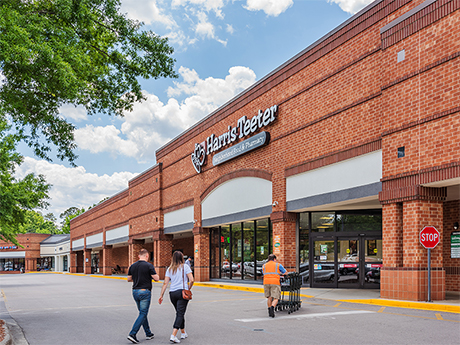By Tom Kolarczyk of JLL
The overall U.S. economic slowdown, rising interest rates and the looming threat of inflation had a negative effect on all segments of Raleigh-Durham’s commercial real estate market last year — and retail was no exception. According to JLL research, there were just 11 retail trades over $5 million between January and December, totaling some $131 million in value. This is a notable drop from the 33 transactions recorded in 2022 valued at $582 million.

On the flipside, however, fundamentals remained incredibly strong with occupancies ending out the year at the near record-setting level of 98 percent. This led to leasing spreads of anywhere between 20 and 40 percent on new leases and helped flip the tables to favor landlords for the first time in decades, where getting space back is generally a positive.
Rents grew 3 to 6 percent in 2023, with an average year-end asking rate of $24.93 per square foot. This represents a year-over-year increase of 6.45 percent from 2022.
While about 80 percent of all retail trades last year were acquired through private capital, an increasing number of REITs are becoming more active via mergers and acquisitions and strategic one-off acquisitions and dispositions.
In addition, institutional investors are also returning to the market as they try to gain scale across the Southeast and in Raleigh-Durham due to the strong market fundamentals. As these owners face upcoming loan maturities, JLL is having many conversations around refinancing, recapitalizing or selling.
In fact, the market is witnessing unprecedented investor interest in retail properties. For example, a Harris Teeter offering (a JLL transaction) last year garnered 26 initial offers and more than 270 confidentiality agreements. By comparison, five to six years ago, the market would have likely seen about half that amount.
Grocery-anchored shopping centers, which survived the pandemic and the explosion of e-commerce, is the most sought-after retail category at this time as a growing list of institutional managers gain more confidence around the space. As such, the bid-ask gap is narrowing for this asset class. For power centers and strip centers, however, the bid-ask gap is slower to close.
Unanchored retail centers are also high on investors’ list due in large part to their simplicity, rental growth potential and relatively low capital expenditure needs. This sector has seen unprecedented capital formation in the past 12 months and is set to see cap rate compression in 2024.
Another factor that has accelerated investor confidence in retail is the purchasing of shopping centers well below replacement cost. According to JLL data, retail trades that occurred within the past 12 to 24 months have been at 55 percent of replacement cost, on average.
While there will still be volatility within the market as interest rates and inflation continue to be a deterrent for some investors, the Raleigh-Durham retail market will continue to outperform most of the region and will have more transaction volume than 2023. However, it will perhaps fall short of 2022 activity.
In the next 12 to 24 months, there will be no shortage of liquidity within the market. Private capital will remain a strong player, advisors will see their client’s capital rotation into retail increase and public REITs and institutions will continue to try and gain scale across the region. The challenge for investors, however, will be the supply of assets for sale as it is anticipated that most of the transactions next year will be focused on debt maturity and/or pressure within partnerships to sell.
In addition, retail is not much of a merchant-build market. Most of the new development in retail is tied to outparcel, single-tenant assets like quick-serve restaurants and convenience stores. Combine the limited new development of shopping centers with some reluctant sellers, who see more upside than downside in retail today, and supply will likely remain below the elevated investor demand we’re experiencing.
Overall, it is a very exciting time for the Raleigh-Durham market as continued population growth, above-average rent growth and limited supply combine to provide an outstanding recipe for retail owners and investors.
— Tom Kolarczyk, senior director, JLL. This article originally appeared in the January 2024 issue of Southeast Real Estate Business.


